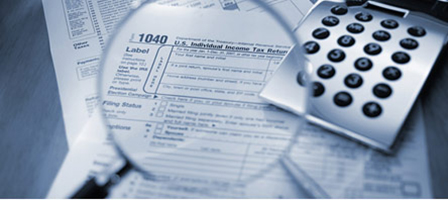HOME OWNERSHIP – YOUR BEST TAX SHELTER
Homeowners Receive Big Tax Breaks
Home ownership can provide you with important tax benefits:
- Deductions for real estate taxes and home mortgage interest, and
- Gain exclusion if you meet certain occupancy and holding period requirements.
- If you install a solar electric system on your residence before 2022, you can qualify for a substantial tax credit.
In fact, tax breaks are probably one of the biggest reasons you decided to buy your home in the first place. Unfortunately, some homeowners lose getting the most from their home’s tax advantages because they aren’t aware that certain limits apply. The purpose of this brochure is to highlight how you as a homeowner can best keep your home’s favorable tax edge.
Your Home’s Basis
The amount of the gain exclusion permitted under current tax law tends to make most taxpayers forget about keeping track of their home improvements. Although inflation has been low in recent years, it could eventually take its toll, and the exclusion limits may not be as significant as they are today, or the law may change again. In either case, it may be appropriate to keep a record of the improvements on your home.
Once you buy a home, you need to begin keeping records related to your home’s “basis,” i.e., the amount you have spent on the property. If you acquired your home through purchase, your basis is what you paid for it originally, including purchase expenses, PLUS improvement costs you incur while you own it. Keeping track of basis is extremely important in order to accurately compute gain or loss if you decide to sell.
For the purpose of computing basis, it’s important to distinguish between “improvements” and repairs; only improvement costs add to your basis. Minor repairs like replacing faucet washers, painting a bedroom or patching a hole in the roof don’t need to be tracked. In general, improvements are of a more permanent nature than repairs. They enhance the value of your home and are likely to last more than one year. If you make the same improvement more than once, only the most recent improvement adds to your basis.
You should log costs of items like the following in a home improvement record (be sure you keep your backup receipts and canceled checks):
| Room additions | Landscaping |
| New driveway | Walkways |
| Fence | Retaining wall |
| Sprinkler system | Swimming pool |
| Exterior lighting | Satellite dish |
| Intercom | Security system |
| Storm windows/doors | Roof |
| Central vacuum | Heating system |
| Central air | Furnace |
| Filtration system | Light fixtures |
| Wiring upgrade | Water heater |
| Soft water system | Insulation |
| Built-in appliances | Kitchen upgrade |
| Bathroom upgrade | Flooring |
| Wall-to-wall carpet | Solar System |
Whenever there’s doubt about whether an expenditure qualifies as an improvement, make a note of it in your record anyway.That way, the ultimate decision about qualification can be made later when (and if) you decide to sell.
The cost of items eligible for energy-saving credits must be reduced by the amount of the credit that was claimed when figuring your basis.
Deductions Related to Your Home
Certainly not all costs related to your home are deductible. For example, unless you use your home for business (e.g., you have an office in your home), costs for insurance, repairs, utilities, condo or homeowner association fees, etc., aren’t deductible. However, you generally will be able to deduct:
- Real Estate Taxes
- Home Mortgage Interest
Keep in mind, however, that home mortgage interest deductions can be limited. The following rules are in effect from 2018 through 2025.
Home acquisition mortgages obtained before 12/16/2017
Generally, you can deduct the interest from home acquisition debt (mortgages) of up to $1 million dollars on a combination of your first and second homes, provided they were the original loans. As the principal on these loans is paid down, the reduced loan amount becomes the new limitation, not to exceed $1 million. If you later refinance the home for more than the remaining balance on the original loan, the excess would have to be used for home improvements to qualify as home acquisition debt interest. If not, a portion of the interest would be equity debt interest.
Home acquisition mortgages obtained after 12/15/2017
As a result of the tax reform legislation passed in 2017, the deductible interest is limited to the interest on the first $750,000 of debt on a combination of your first and second homes, provided they were the original loans. If you later refinance the home for more than the remaining balance on the original loan, not to exceed $750,000, the excess would have to be used for home improvements to qualify as home acquisition debt interest. If not, a portion of the interest would be equity debt interest.
Home Equity Interest
Prior to 2018 homeowners were also allowed to deduct the interest on the first $100,000 of debt secured by the home that exceeded the $1 million acquisition debt limit. The 2017 tax reform legislation suspended (temporarily repealed) the interest deduction for home equity debt.
Loan Points: A question often comes up about the deduction for points on a home loan. Points are another name for prepaid interest – they may be called loan origination fees or some similar term. One point equals 1% of the loan amount. When points are paid for services a lender provides to set up a loan, the points aren’t deductible. However, when the points are paid as a charge for the use of money, the following rules apply:
- As a general rule, points are only deductible over the life of a loan. Say, for example, you paid $3,000 in points on a 30-year refinance loan. Your tax deduction would be limited to $100 a year ($3,000/30 years). If you decided to pay your loan off early, say after 15 years, you could write off the balance of the points ($1,500) in that year.
- An exception to the general rules lets you deduct, in full, points you pay in connection with obtaining a mortgage to purchase, construct, or improve your main home.
- Seller-paid points can even be deducted by a home buyer, but the amount deducted reduces the home’s basis.
Reporting Gains/Losses
Exclusion of Gain: When you sell your principal home at a gain, you can exclude all (or a portion) of the gain if you meet certain occupancy and holding period requirements. To qualify for this exclusion, you must have owned and occupied the residence for two years out of the five year period that ends on the date of the sale. If you meet those qualifications and are filing a joint return with your spouse, you may exclude up to $500,000 ($250,000 for a single individual) of gain from the sale.
A partial exclusion may be allowed even if the two-of-five year ownership and occupancy tests aren’t met if the sale is due to a job-related move, health, or certain unforeseen circumstances. If you do not qualify for the full or partial exclusion, there is no deferral privilege and the gain not eligible for exclusion is fully taxable, but will be eligible for the beneficial maximum long-term capital gains tax rates if you owned the home over one year.
NOTE: A second home, such as a mountain cabin or lake cottage, doesn’t qualify for the exclusion of gain.
Caution: Gains in excess of any allowed exclusion are treated as investment income and may be subject to the 3.8% Net Investment Income Tax.
Previously Postponed Gain: Under prior tax law (generally pre-’98), gain from the sale of a principal residence could be deferred into your replacement residence. Those gains were accumulated from home to home as long as each replacement home cost more than the adjusted selling price (i.e., sales price less expenses of sale and pre-sale “fix-up” costs) of the previous home. Although gain deferral from a principal residence is no longer permitted under current law, the gains deferred under prior law into a home currently being sold must be accounted for.
Sales at a Loss: Losses from the sales of business or investment properties are normally tax-deductible. However, a loss from the sale of your main home is considered personal in nature, and therefore, unless the law changes, it is not allowed as a deduction. This rule also applies to second homes.
Reporting the Sale: You do not need to report the sale of your main home on your tax return unless you have a gain and at least part of it is taxable – i.e., if the gain is greater than your allowed exclusion, the sale is reportable. Otherwise, if the gain is totally offset by the exclusion, the sale need not be shown on your tax return. However, to be certain that no reporting is required, you should provide your tax advisor with the sales documents, cost basis information, etc., to evaluate your situation. You may receive Form 1099-S showing the gross proceeds from the sale, although settlement agents (escrow companies) are not required to issue a Form 1099-S for most sales of main homes. If you do receive a Form 1099-S, let your tax advisor review it and determine if it is necessary to report the sale.
Exclusion Qualifications
Under prior law. . . (generally pre-1998), individuals were entitled to a once-in-a-lifetime exclusion of gain from the sale of their principal residence. To qualify for that exclusion, the taxpayer or spouse must have reached the age of 55 prior to the sale, and they must have resided in the home for three of the prior five years. Having exercised that exclusion does not bar a taxpayer from qualifying for the current law exclusion.
Under current law… there is no age requirement associated with the exclusion. The period of time the home must be owned and occupied as a principal residence is two out of the five years immediately preceding the sale date. The maximum exclusion amount is $500,000 for married couples filing jointly and $250,000 for other individuals. Taxpayers are permitted to exclude a gain every two years if they meet all of the other conditions. There are no gain-deferral provisions in the current law for purchasing a replacement residence; thus, any gain not excludable is immediately taxable.
Five-Year Holding Period: If you originally acquired the home you intend to sell by means of a tax-deferred exchange (sometimes referred to as a 1031 exchange), the required ownership period to qualify for the home sale exclusion becomes five years as opposed to the normal two years.
Special Prior Rental Issues: If your home was previously your rental property and used as a rental any time after December 31, 2008 and prior to converting it to your home, a portion of the gain will not qualify for the home gain exclusion. Also, depreciation taken on the home while it was a rental will not qualify for the exclusion. Please call this office for additional details when a sale relates to a home that was previously used as a rental.
Non-Qualified Use: If the home was previously used as other than your main home (non-qualified use), for example, as a second home or a rental, and converted to your personal residence after December 31, 2008, the portion of the prorated gain attributable to the non-qualified use will not qualify for the home gain exclusion.
Special Military Rules: Generally, the five-year qualification period for the 2-out-of-5-year use test can be suspended for up to 10 years for persons on qualified extended duty in the U.S. Armed Services or the Foreign Services. Please call this office for more details.
Tax Planning and Your Home
The information outlined here is only a brief overview of the tax rules involving home ownership. Since the rules are complicated, if you’re thinking of buying or selling your home, or refinancing a home loan, it’s best to discuss the plans with your tax advisor to interpret closing documents and to make absolutely certain the transaction meets the necessary qualifications.
The advice included in this article is not intended or written by this practitioner to be used, and it cannot be used by a practitioner or taxpayer, for the purpose of avoiding penalties that may be imposed on the practitioner or taxpayer.







Leave a Reply
Want to join the discussion?Feel free to contribute!